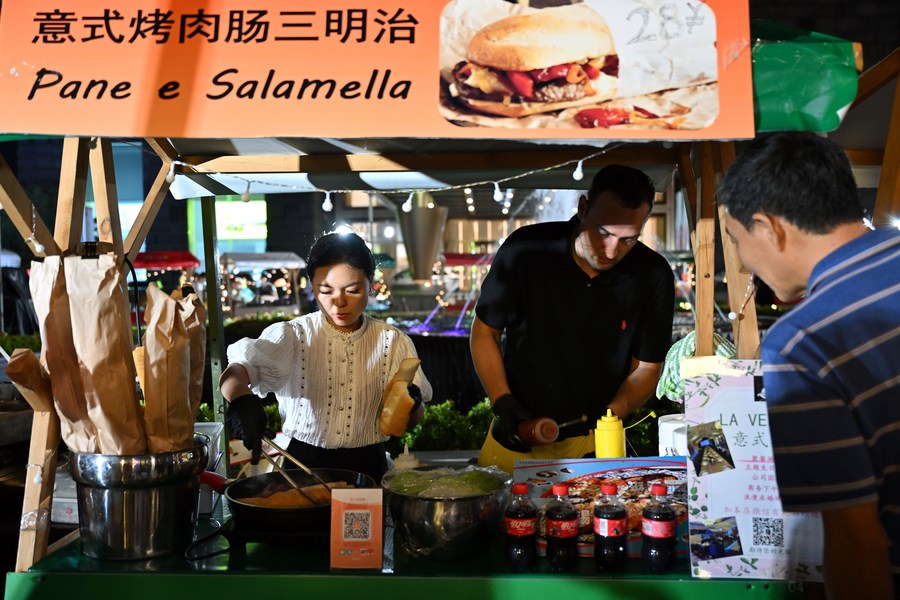Now is right time for Italy's SMEs to tap into China market, says IUAD president

In this photo taken with a mobile phone, people visit the Italian National Pavilion during the 2023 China International Fair for Trade in Services (CIFTIS) at China National Convention Center in Beijing, capital of China, Sept. 5, 2023. (Xinhua/Wei Mengjia)
Noting that Italian and Chinese trade cooperation has been fruitful, Lettieri said that cooperation with Italian firms can help Chinese companies explore the third party market, while the China market has also been attractive for Italian enterprises.
ROME, Sept. 19 (Xinhua) -- Now is the time for Italy's small and medium enterprises (SMEs) to seize the rising opportunities to develop and thrive in China, Michele Lettieri, president of the Institute of Universal Art and Design (IUAD), told Xinhua in a recent interview.
"We have for many years been considering relations towards the East, particularly with China," he said. Lettieri is the son of the founder of IUAD, which was established over 50 years ago.
After the first partnership agreement with Zhengzhou University 17 years ago, IUAD now has four cooperation projects with Chinese institutes to encourage youth exchange and design training.
Looking forward, Lettieri said he plans to open a new branch in China with some Chinese partners to offer specific training courses tailored for local students.
He said IUAD has rich experience in teaming up with Italian and Chinese partners, and he was impressed with China's rapid development over these years.

Chef Alessandro Galimberti (2nd L) makes sandwiches at the Italy Day event in Haikou, capital of south China's Hainan Province, Sept. 15, 2023. (Xinhua/Guo Cheng)
In the past years, the Italian companies that have prospered in China were active mainly in the luxury sector, he noted. However, there is a huge "unsatisfied demand" for high-quality Italian products that are not luxury brands.
"Now is the time to match supply and demand even for a product that is nonetheless of high quality but not considered luxury, which tends to be made by medium-small companies that do not have the capacity to expand into China," he said.
"Economically speaking, these small firms can create new business as they are the most dynamic force of the economy," he said, noting that "Italian craftsmanship and creativity come from the diversity of many small artisans."
In Lettieri's view, Chinese youths who study in Italy and learn about local entrepreneurship can play a significant role in helping "made in Italy" products arrive in China.
"These small businesses will never get there (China) without the support of these young people," he said.
The number of pre-registered Chinese students at Italian universities jumped from 3,549 in 2021 to 4,726 in 2022, with those applying for art majors standing at 1,948 last year, Uni-Italia, an official organization to promote Italian higher education abroad, said.

Visitors taste Italian wine at the Italy Day event in Haikou, capital of south China's Hainan Province, Sept. 15, 2023. (Xinhua/Guo Cheng)
Noting that Italian and Chinese trade cooperation has been fruitful, Lettieri said that cooperation with Italian firms can help Chinese companies explore the third party market, while the China market has also been attractive for Italian enterprises.
In the past five years, the volume of bilateral trade soared from 50 billion U.S. dollars to nearly 80 billion U.S. dollars, while Italy's exports to China jumped about 30 percent, official data showed.
"I believe the momentum will maintain, just like what has happened over the past decades," he said.


